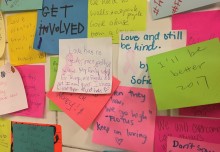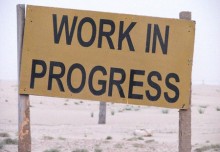
At work and in life, have you ever noticed how often you say “no” to new ideas or suggestions? And how about “yes, but”, which is essentially the same as no? What would happen if in that moment when your habitual pattern is to reject different or unfamiliar ideas, you chose to say “yes, and” instead?
To answer that question, look no further than the world of improvisational comedy. A fundamental tenet of improv, the “yes,and” technique dictates that each member of an ensemble accepts whatever scenario a fellow member presents (that’s the “yes”) and then adds to it to further the scene (that’s the “and”). It’s a practice that allows for all possibilities as the actors riff off of what is presented to them in the moment without the option of rejecting it and is based on the premise that the creativity of the ensemble is greater than that of any one member on his or her own.
When taken off the stage and brought into the conference room, “yes, and” is a powerful tool to fuel open communication and innovation. Now you might be asking “but what if I don’t agree with the idea, why should I say yes?” And this is where the power of the process lies because the yes does not necessarily mean “I agree” but rather “I’m listening and I’m suspending judgment”. By saying yes, you commit to being open to the idea in the moment and to exploring its possibilities by building on it. Even if the idea is eventually discarded, it has at least been aired and potentially has sparked other innovative approaches that might not otherwise have surfaced. Moreover, the person who made the suggestion feels that he or she has been heard and valued. If members of a group don’t fear that their ideas will be immediately shot down or dismissed, they are more inclined to offer creative input.
By creating this safe environment where individual differences and divergent points of view are welcome, the “yes, and” approach fosters positive engagement and a spirit of collaboration. Stated simply, “yes, and” builds bridges whereas “yes, but” burns them.
Cultivating a “yes, and” approach requires drawing on some tried and true leadership skills:
An ability to be present and engaged – on a basic level, this means tuning out distractions (no emails and cell phones, please) and bringing your full attention to the table. On a deeper level, it means putting aside preconceived judgments and stories so you can focus and be open to new and different perspectives as they arise.
An ability to listen deeply and be curious – here it’s important to distinguish between listening to understand and listening while waiting for the chance to respond. The former stems from curiosity and a desire to connect whereas the latter stems from a desire to control.
A willingness to risk failure – this is often the scariest one for people. It involves putting ego aside and daring to expose your ideas to scrutiny.
I’ve seen the power of “yes, and” at work first hand in group facilitations. When asked to come up with an approach to a hypothetical challenge, those groups able to model “yes, and” expressed a sense of connection among team members, described the process as energizing and fun and came up with a wide array of possibilities.
In the groups where even just one participant struggled with letting go of “yes, but” tendencies, team members expressed feeling shut down and judged and were less enthusiastic about the experience. As you might imagine, they came up with fewer creative approaches to the posited challenge than their “yes, and” colleagues.
Of course there are instances when “no” is the appropriate response. But as Karen Tilstra, Co-founder and Director of the Florida Hospital’s Innovation Lab, explains in her TEDx talk, Two words that can change the world, YES, AND https://www.youtube.com/watch?v=l1SK_qNLx5U, we have been conditioned to say no and we’re not even aware of how frequently we say it. Moreover, she posits that we all have an individual no-to-yes ratio. For some it might be 10 no’s to everyone one yes, for others 110 to one.
Are you willing to take a hard look at your no-to-yes ratio and challenge yourself to say yes to something you might not otherwise have and see where it takes you? After all, life is one big improvisation.









